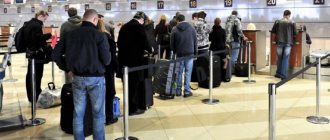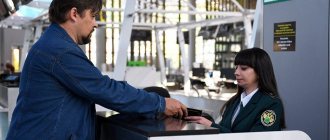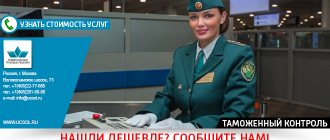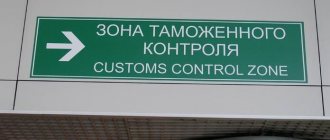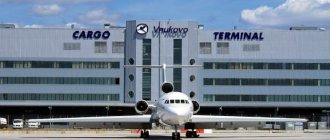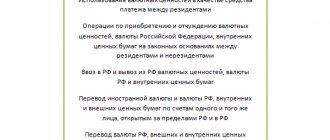Every person traveling abroad must go through customs control. The main task of the customs service is to suppress illegal attempts to export or import foreign currency, jewelry, masterpieces of painting and other valuable items. To do this, an inspection procedure is carried out, during which the passenger’s luggage and personal belongings are checked by representatives of the airport security service. In our article we propose to discuss the issue of how to go through customs control at the airport.
All passengers on domestic and international flights are subject to passport control and security controls
How to go through customs control at the airport
To get to any city or country, it is best to use the services of airlines. It is on modern airliners that the largest number of travelers fly, and besides, a modern aircraft delivers everyone to their chosen destination comfortably, quickly and absolutely safely. Not to mention that in many cases there is simply no alternative.
It should be noted that passing both customs and passport control is a necessary procedure for those passengers who have purchased tickets for international flights. If you are not leaving the country, you do not need to undergo these types of controls. However, it is worth keeping in mind, just in case, that if the security service shows special interest in you, you will still have to demonstrate the contents of your luggage and hand luggage.
Arriving at the airport, first of all, you need to check in for your flight. After this, airport staff must hand over your boarding pass. It states the following.
To find the counter where registration takes place, you should look at the information displayed on the board. You can check in for your flight online one day before the scheduled departure time. This procedure is convenient because the passenger can independently choose a seat in the cabin.
Having a printed ticket in hand and having checked in online, upon arrival at the airport, especially if you do not have luggage, you do not need to stand in line at the counter or go through the procedure again.
If you have luggage, you must check it in. If you are overweight, you must pay for each kilogram. In order not to waste money, you should check in advance on the airline’s website what weight is allowed for transportation without additional payment.
After clearing customs and border control at the airport, passengers will undergo a security check. Airport employees inspect both the passenger himself and his personal belongings, which are transported in a bag or small briefcase. Control is carried out according to this scheme.
- One by one, all passengers pass through a special frame that reacts to metal objects. Take everything out of your pockets, remove your belt and unbutton your outerwear. If you have a piercing, don't worry, the metal detector won't pick it up.
- Hand luggage is checked by x-ray. However, be prepared that security personnel may ask you to unzip your bag if necessary.
- In some cases, passengers may be asked to remove outer clothing and even shoes. As a rule, a small percentage of passengers are subject to more thorough searches.
Many people are interested in how to go through customs control at the airport, and what the service employees check. During inspection, customs officers check.
- whether the passenger has firearms and ammunition;
- whether he is carrying only the permitted amount of money;
- whether passengers export antique items or other things for which a mandatory state duty is provided abroad.
The rules for passing customs control at the airport are quite simple. First of all, carefully read the list of prohibited items for import and export if you are traveling abroad. Some countries have very specific rules.
For example, even a handful of earth or sand cannot be taken out of Thailand.
Border control zones
Each airport uses two corridors where customs inspections are carried out. The creation of two corridors made it possible to divide the queue into two streams, which significantly optimized the entire process. The green corridor is used for processing passengers who do not need to fill out a customs declaration for their luggage. The red zone is used to serve those tourists who need to pay customs duties required for the transportation of various objects.
Green corridor
This zone can be used by all tourists whose luggage does not contain prohibited items or those objects that are subject to customs duties. Those people who bring less than ten thousand dollars into the country are sent here. When leaving the country, the green corridor can be used by persons taking less than three thousand dollars for a trip. Passengers taking jewelry with a total value of less than twenty-five thousand dollars on a trip can use the green zone.
In addition to all of the above, this zone can be used by all tourists who are exporting jewelry from the country, to which permitting documents are attached. The issue of transporting cigarettes and alcoholic beverages purchased for personal use deserves special attention. Customs officers allow the carriage of no more than one block of tobacco products and three liters of alcoholic beverages. Otherwise, passengers will need to complete a customs declaration.
It is important to note that using the green zone is not a reason to refuse a security check. Airport terminal staff can search any passenger, which makes them suspicious. According to statistics for two thousand and sixteen, about ninety-five percent of tourists from the total flow of passenger traffic used the green corridor at the Vnukovo air harbor.
Customs control includes inspection of personal luggage and belongings
Red zone
Passengers whose luggage contains items that are subject to mandatory declaration should use the red zone . This group includes objects whose transportation is limited by law. This zone is intended to serve tourists who export securities and large sums of money from the country.
All travelers who are carrying large and heavy cargo or personal items with a total value exceeding ten thousand dollars need to queue in this zone. Customs authorities will check the passenger's luggage in accordance with the list of valuable items specified in the tax return. Special equipment is used for this. Before heading to the airport, it is recommended that you review the list of items that have transportation restrictions.
Current legislation prohibits the transportation of explosives, bladed weapons and firearms without accompanying documentation. In addition, it is prohibited to export animals listed in the Red Book. Travelers will face adverse consequences when attempting to transport government awards or anything considered cultural property. Any items that have poisonous or narcotic properties are prohibited for transportation. In addition to all of the above, the legislation imposes restrictions on the procedure for exporting sturgeon caviar (up to two hundred and fifty grams) and seafood (no more than five kilograms) from the country.
A detailed list of items that are prohibited for transportation is published on the official portal of each air carrier. There you can also find a list of items that are subject to various restrictions. If prohibited items are detected during screening at the airport, security officers may prohibit the passenger from departing the country. Customs officers draw up a special act, according to which valuables are confiscated and the completed papers are transferred to law enforcement agencies. Based on these papers, the prosecutor's office initiates a criminal or administrative case.
Airport for a beginner
Finally, you have waited for your vacation and are flying off to relax. Only this will be your first time flying on an airplane... And then you have a million questions: what to do at the airport? Where to go?
How not to be late for a flight?
We decided to make a small FAQ on terms and procedures that will help newbies feel a little more confident at the airport.
Once at the airport, the first thing you must do is check-in. Above the check-in desk there is a board with the airline logo, flight number and arrival city.
When registering, you must present your passport and air ticket. If you have an electronic ticket, then present only your passport. You must place your luggage on a transport belt, where it will be weighed, a special tag will be hung (so that the baggage handlers know which plane to put it on, and you can find it later) and sent to the baggage handlers.
You will also be asked to present your hand luggage (things you want to take with you on board the plane), which may also be tagged.
As a rule, the weight of hand luggage should not exceed 7-10 kg. In addition, there are certain requirements for the dimensions of the bag, which you can check with the airline.
After check-in, you will be given a boarding pass and luggage tags (stickers that are placed on your passport or boarding pass, they will help you find your suitcase upon arrival).
You can register not only at the airport, but also at home. Some airlines practice online check-in for flights. You can register this way using a laptop, tablet, or even a phone.
You can read more about mobile registration in the post “Mobile registration”. How is Customs Control at Vnukovo Airport, Minsk? After that, you print out your boarding pass using a regular printer, and check your luggage at a special Drop off counter.
The boarding pass will indicate at which gate you will board the plane and your seat in the cabin. When checking in, you can ask the airline representative to seat you in a comfortable seat, such as by a window or near an emergency exit. Gate (English: gate) is the gate to your plane.
Then, following the signs, you will need to proceed through pre-flight security. You will be asked to go through the gate and will be inspected for items prohibited for transportation. And border officials will check your passport and visa if necessary.
Please note that during security checks, when asked by security officers about the objects and substances you have, you should not make jokes, for example, “this is a bomb”, “this is drugs”, etc. Such answers are considered as a statement by the passenger about the presence of dangerous substances and objects and may entail removal from the flight, and further investigation and prosecution in accordance with the legislation of the Russian Federation, up to the initiation of a criminal case under Art. 207 of the Criminal Code of the Russian Federation (“Knowingly false report about an act of terrorism”).
On international flights, all passengers must go through customs control before check-in. During its passage you will see two corridors: “red” and “green”. They are indicated by inscriptions in Russian and English: “There are no goods subject to mandatory written declaration” (Nothing to declare) for the green corridor and “Goods to declare” for the red corridor.
The green corridor is intended for passengers who do not carry goods that are subject to mandatory written declaration.
Red - for passengers who have goods that are subject to mandatory written declaration, i.e. goods that are subject to customs duties, have cost and quantity restrictions, etc.
After completing these formalities, you will be taken to a waiting room where cafes and duty free shops are located.
When your flight is boarded, return to your gate and present your boarding pass and passport (not always required) to the airline representative. The boarding pass has a tear-off spine on the right, on which the basic information is duplicated. The airline representative will tear it off and give it to you.
Keep your ticket until you receive your luggage upon arrival.
Boarding is announced several times over a loudspeaker; the same information is duplicated on the information board and above the gate itself.
You will be put on a bus, which will take all passengers to the plane. Large airports have telescopic bridges that allow you to board the plane directly from the terminal.
What will happen on board the plane is no less interesting, so we advise you to read our article “Why and why on board the plane.” She will answer most of your questions, for example, why your ears clog during takeoff and landing, why you should turn off your mobile phones, and much more.
Upon arrival, you will be put on a bus again or across the bridge to the airport's arrival hall, where you will go through passport and customs control and pick up your luggage.
And our Telegram channel also has useful and relevant information. We talk about places where you immediately want to fly, publish cheap tickets and tell the news.
Baggage check-in
At the check-in counter, each passenger can check in their luggage. Baggage will not be checked in until the final destination if the passenger is flying on different airlines with different tickets. In this case, you need to re-register at an intermediate point.
Hand luggage
You can only take items of a certain size and weight with you in your hand luggage. In economy class, up to 10 kg is allowed, in business class - 15 kg. The size of luggage must not exceed 115 cm in three dimensions (55x40x20). Low-cost airlines have different requirements for hand luggage; you can find them on the carrier’s website.
In hand luggage, you cannot carry sharp objects, liquids exceeding 100 ml in volume, radioactive, explosive, or flammable substances. It is best to check the list of prohibited items for transportation in hand luggage in advance with a representative of your airline.
In addition to the permitted baggage, in addition to the permitted baggage, passengers are allowed to take into the aircraft cabin:
- laptop,
- bouquet of flowers,
- video camera, photo camera,
- umbrella,
- baby portable cradle,
- cane,
- diapers and baby food,
- documentation,
- book to read,
- outerwear,
- cellular phone,
- crutches, a stretcher or a wheelchair when transporting a passenger with limited mobility,
- a bag with purchases from the Duty Free store.
These items are not presented for weighing and are not processed during registration.
The weight limit for free baggage transportation in the cargo compartment of the aircraft is limited. Typically it is around 20kg for an economy class passenger and around 30kg for those traveling in business class. You will have to pay approximately 3 euros for each kilogram in excess of the established norm. To ensure that your bags and suitcases are treated with special care, when checking in, you can ask the airport employee for a “FRAGILE”* suitcase sticker.
Such fragile items can be transported in the aircraft cabin as hand luggage. But at the same time it is necessary to comply with the established limits on weight and dimensions. If you want to transport fragile luggage weighing up to 75 kg, for example musical instruments, then you need to purchase a separate ticket for one seat. If the total weight exceeds 75 kg, such baggage is carried on two or more seats, and this will require the required number of air tickets. No discounts are provided in this case.
Checked baggage
Typically, the baggage you check in can contain any items except dangerous ones:
- drugs,
- explosives, etc. (according to international classification).
A special permit must be issued for weapons.
Overweight luggage
The passenger is obliged to pay for the transportation of baggage that exceeds the free baggage allowance at the established rate in effect on the day of transportation for the entire transportation to the destination. To avoid overpaying for luggage, you need to check the baggage allowance in advance on the airline’s website. It is better to pay for excess luggage online; the cost of paying for excess luggage at the airport is much higher, on average 20 euros per 1 kg.
It should be borne in mind that exceeding the norms is also limited, even with an additional payment. Excess baggage should not exceed:
- for economy class passengers - 32 kg and 203 cm,
- for business class passengers - 50 kg and 203 cm.
Passing entrance and pre-flight inspection
Pursuant to the Decree of the President of the Russian Federation dated 05/09/2017 No. 202 “On the specifics of the application of enhanced security measures during the 2021 FIFA World Cup and the 2017 FIFA Confederations Cup in the Russian Federation”, as well as in order to ensure aviation security and increase anti-terrorism security of the Moscow (Vnukovo) airport and in accordance with Appendix No. 1 to the order of the Ministry of Transport of Russia dated July 25, 2007 No. 104 “On approval of the Rules for conducting pre-flight and post-flight inspections”, the following measures have been introduced at JSC Vnukovo International Airport from June 5, 2021.
Based on the Rules for pre-flight and post-flight inspections, approved by order of the Ministry of Transport of the Russian Federation dated July 25, 2007 No. 104, pre-flight inspection of passengers and hand luggage is carried out by employees of the aviation security service of the Vnukovo international airport together with police officers of the line department of the Ministry of Internal Affairs of Russia at Vnukovo airport using special and technical means of inspection.
When undergoing pre-flight inspection, the passenger is asked to present for inspection outer clothing, belts, wallets, contents of pockets, hand luggage using an X-ray television introscope, and to pass through a stationary metal detector.
In accordance with the order of the Ministry of Transport of the Russian Federation dated April 16, 2012 No. 96 “On amendments to the Rules for pre-flight and post-flight inspections”, approved by order of the Ministry of Transport of the Russian Federation dated July 25, 2007 No. 104, the rules for passing pre-flight inspection are changing. The passenger may not take off his shoes, as well as his belt, if...
- medical tonometer - one per passenger;
- mercury tonometer in a standard case - one per passenger;
- barometer or mercury manometer, sealed
- container and sealed with the sender's seal;
- disposable lighter - one per passenger;
- dry ice - no more than 2 kg per passenger.
If a minor citizen of Russia leaves the Russian Federation unaccompanied by parents, adoptive parents, guardians or trustees, he must have with him, in addition to his passport, a notarized consent from one of the named persons (original) for the departure of a minor citizen of the Russian Federation, indicating the date of departure and the state (states) which he intends to visit. In this case, consent from the second parent is also not required.
According to the explanation of the Ministry of Justice of Russia, the validity period of a notarial consent in accordance with Article 190 of Part One of the Civil Code of the Russian Federation is determined by a calendar date or the expiration of a period of time, which is calculated in years, months, weeks, days or hours. The period can also be determined by an indication of an event that must inevitably occur - coming of age, expiration of a passport or visa, etc.
Parental consent, drawn up by a notary of a foreign state, must contain a translation into Russian and be properly legalized by certification by a consular office abroad of the Russian Ministry of Foreign Affairs or by affixing an apostille provided for by the Hague Convention Abolishing the Requirement for Legalization of Foreign Official Documents of October 5, 1961.
For a minor Russian citizen to enter the Russian Federation, a notarized consent is not required, because in accordance with the provisions of Article 2 of the Federal Law of August 15, 1996 No. 114-FZ “On the procedure for leaving the Russian Federation and entering the Russian Federation, a citizen of the Russian Federation cannot be deprived of the right to enter the Russian Federation.
Departure from the Russian Federation of minor children, information about which is included in the passports of the old-style parents accompanying them (not biometric, issued in accordance with Decree of the Government of the Russian Federation of March 14, 1997 No. 298), is carried out according to the validity period of these documents, without the need for registration for the child a separate passport identifying the citizen of the Russian Federation outside the territory of the Russian Federation.
In accordance with the requirements of Article 21 of the Federal Law of August 15, 1996 No. 114-FZ “On the procedure for leaving the Russian Federation and entering the Russian Federation in the event that one of the parents, adoptive parents, guardians or trustees declares his disagreement with leaving Russian Federation of a minor citizen of the Russian Federation, the issue of the possibility of his departure from the Russian Federation is resolved in court.
Also, the Border Service of the FSB of Russia is working with transport companies and tourism organizations to inform people planning to travel abroad about the procedure for leaving the Russian Federation and the necessary documents for the right to cross the state border of the Russian Federation.
But, despite this, conflict situations continue to arise at checkpoints related to the refusal to leave minor citizens from the Russian Federation, which are most often provoked by the parents themselves, who are not convinced of the availability or correctness of the documents of minor children for the right to leave the Russian Federation.
The Border Service of the FSB of Russia has instructed border officials to provide all possible assistance to minor citizens who have not been allowed to cross the state border. Including sending them, accompanied by their representatives, on the return route; informing parents about the situation with their children; providing places to wait until one of the parents or legal representatives arrives for the minor citizen.
For departure from the Russian Federation to the Republic of Kazakhstan, the Republic of Belarus, the Kyrgyz Republic, the Republic of Abkhazia, the Republic of South Ossetia and Ukraine for children under the age of 14 years, a birth certificate indicating citizenship of the Russian Federation is provided as a document for the right to cross the state border ( with insert or mark).
At the same time, the Government of Ukraine decided to suspend, from March 1, 2015, the validity of paragraphs 1 and 5 of the list of documents of citizens of the Russian Federation, determined by the Agreement between the Government of the Russian Federation and the Government of Ukraine on visa-free travel of citizens of the Russian Federation and Ukraine, concluded on January 16, 1997, in terms of the ability to travel, transit, stay and move around the territory of Ukraine on the basis of a passport of a citizen of the Russian Federation or a birth certificate (for children under 14 years of age) indicating their citizenship of the Russian Federation.
In this regard, an instruction was sent to the border authorities to carry out the passage of citizens of the Russian Federation traveling to Ukraine using the specified documents in the same manner and to inform them about the possible refusal by the Ukrainian border authorities to allow passage across the Ukrainian border. This information was placed on information stands at checkpoints, and work was also carried out with representatives of transport companies - carriers that have transport connections with Ukraine, about the need to inform citizens of the Russian Federation about changes by the Ukrainian side to the procedure for allowing Russian citizens to enter Ukraine.
In accordance with Decree of the President of the Russian Federation of November 14, 2002 No. 1325 “On approval of the regulations on the procedure for considering issues of citizenship of the Russian Federation, belonging to the citizenship of the Russian Federation can be confirmed by the following documents.
• A birth certificate with a note confirming citizenship of the Russian Federation. If the birth certificate was issued by a competent authority of a foreign state, such a mark is affixed to a document containing a translation into Russian of the birth certificate. The specified document must be certified by affixing an apostille on it.
According to the Rules for pre-flight and post-flight inspections, approved by Order of the Ministry of Transport of the Russian Federation dated July 25, 2007 No. 104, liquids, gel-like substances and aerosols in containers with a volume of no more than 100 milliliters are allowed for transportation on board the aircraft. The total volume of containers allowed for transportation must not exceed one liter per passenger.
Containers carried in hand luggage must be packed in a transparent bag. Liquids purchased from duty-free shops can also be taken on board the aircraft sealed in a transparent bag. Dear passengers! In order to simplify the security check, we recommend that before checking in for your flight, you check in your luggage for liquids that you will not use during the flight.
In accordance with Appendix No. 1 to the Rules for pre-flight and post-flight inspections of passengers approved by Order of the Ministry of Transport of the Russian Federation dated July 25, 2007 No. 104, it is prohibited to transport the following dangerous substances and objects in checked baggage, on one’s person, or in passengers’ belongings.
We draw your attention to the fact that when traveling abroad, in addition to restrictions on the transportation of individual items and substances imposed by the legislation of the Russian Federation, in other countries other restrictions are also applied, provided for by the customs legislation and aviation security rules of these states.
How to fill out the form correctly
6 tips to help you spend a comfortable night at the airport
Note! A very important point is to fill out the declaration correctly.
To do this, you need to follow the following filling instructions:
- First name, last name and patronymic. Exactly as it is written in the passport and in large block letters, one in each box. You will also need to note the type of flight: entry, exit or transit.
- Citizenship, country of permanent residence and country of departure. In printed capital letters, occupying one cell with one letter.
- Passport ID. Numbers one per cell.
- Purpose of the visit, availability of accompanying minors and amount of hand luggage per piece.
- Transported currency. It is necessary to enter the name in large block letters in the left column, the quantity in numbers in the middle column, and the quantity in words in the right column.
- Jewelry, if any. On the left is the name, in the middle is the quantity in numbers, on the right is the quantity in words.
- Note whether the passenger has the listed items. The list includes ammunition, guns, antiques, taxable items and more.
- If there are items that are not listed in the previous paragraphs, then they must be entered in the following table. First, enter the name, distinctive features and issuing authority, then the quantity in numbers and words, and in the very last column - the price of the product in US dollars. If not all columns are filled, then a dash is placed on the empty ones.
- If you have a vehicle, fill out the appropriate table. It is necessary to indicate information about the car itself and the engine (number, type, date of manufacture, etc.), then note the customs regime, then information about the power of attorney for the vehicle.
- The last thing to write down is the date the declaration was completed and the signature. The remaining field is for the customs officer at the airport.
Example of a customs declaration
Important! The form may differ in different countries. For exact information please contact the airport or airline. A sample of filling out the Russian Federation declaration at the airport can be seen below. This will be provided, for example, when flying from Moscow.
How customs officers at Vnukovo Airport identify intruders
Modern technologies, expert skills and amazing finds. All these are elements of the everyday work of customs at Vnukovo airport. How to guess a criminal in an ordinary passenger, find contraband in a children's toy and stop cunning illegal supply schemes - in the material of TV Center.
Drugs in a children's tractor are no longer toys. Employees of the Vnukovo customs office constantly encounter such parcels. When checked, the four-wheel tractor turned out to be a place for planting marijuana. Postal smuggling is at the peak of popularity today, because the movement of goods can be tracked on the Internet. However, customs control checks every parcel from abroad, TV Center reports.
Weapons, icons and even sanctioned products. They are trying to smuggle everything across the Russian border. Customs officers have learned the sophisticated schemes of smugglers almost by heart. During his 20 years of work at the post, Dmitry Amanov learned, as they say, to read people by their faces.
Psychologist and investigator at the same time. Customs officers know their “clients” by sight. Thousands of parcels pass through the belts every day. And in every tenth they find suspicious things. The inspector puts tags on their suitcases long before baggage is claimed on international flights. All bags go through the scanner. Dog handlers also do their work. Sheepdog Gana will not let a suspicious suitcase pass by.
Such luggage is necessarily inspected by inspectors and if they find undeclared goods, they hand the passenger over to law enforcement officers. However, there are cases when goods even bypass customs posts. This is how illegal supplies of clothing and footwear from Turkey come to Russian markets.
How long does customs inspection take?
The period for customs inspection will be reduced from 10 to 1 day. For the first time, by analogy with tax legislation, a deadline for conducting customs examinations has been established - 4 months and customs inspections - up to 90 days. It is also proposed to introduce a rule allowing for the possibility of payment of customs duties by third parties.
Interesting materials:
How much laundry detergent do you need in a washing machine? How much washing powder do you need for one wash? How many turns for delicate wash? How many pairs of sneakers can be machine washed? How long does a regular wash take? How long does it take to wash cotton 60? How long does it take for an LG machine to wash? How long does it take for an automatic machine to wash? How long does a machine wash at 60 degrees? How long does a machine wash at 60 degrees?
In an Aeroport
Vnukovo International Airport
is the oldest airline in the Moscow aviation hub, which has experienced great events that are inextricably linked both with the history of our country and with the history of domestic civil aviation. Vnukovo has a special status - for more than seventy years the airport has been servicing flights of aircraft of the country's top officials, heads of foreign states and governments arriving in Russia.
The first ground level of Terminal A is designed to serve arriving flights. For departing passengers, the second ground level of the terminal is used, which is adjacent to the overpass. To serve VIP passengers, there are special rooms on the third ground level of the terminal, equipped with meeting rooms.
At all levels of Terminal A there are spacious and comfortable waiting rooms, shops, food outlets and other service organizations that will not let you get bored while waiting to board your flight. And in the business lounges, passengers are offered the latest newspapers, soft drinks, a buffet, massage chairs, a separate area for children and Wi-Fi.
For those who plan to fly through Moscow in transit
, the most comfortable conditions have also been created. Since the terminal has an end-to-end division into two zones - for servicing passengers of domestic and international flights, here, unlike many other airports in Russia and Europe, you can move from the domestic lines zone to the international zone by the shortest route, without leaving the terminal building.
Vnukovo International Airport
is provided with the most extensive and high-tech network of transport communications and is located just 28 kilometers from the historical center of Moscow. Three highways converge here - Kievskoye, Borovskoye and Minskoye, and in the immediate vicinity of the airport complex there are parking lots for all types of public transport. At the same time, passenger terminal A is combined with a unique, the only underground railway station in Russia, where Aeroexpress high-speed electric trains arrive from the Kievsky railway station.
